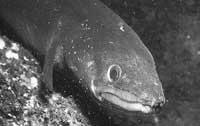Breathing and blood flexibility
Oxygen detection and absorption in water. This is what animals living in the water have to do and, being in small amounts, they have to make the most of the essential gas for breathing. Biologists from the University of Uppsala have discovered that this capacity is due to changes that occur in the blood of these animals.

Leaking through the respiratory organ, researchers found that spectacular changes occur in blood cells. To do this, they anesthetized a trout and with the microscope analyzed the phenomena that occur both in the gills and in the blood.
Red blood cells behave very flexibly and deform, altering their appearance to capture more oxygen. Thanks to this basic deformation, the extension of the cells increases and thus they are able to detect more gases and stay longer in the gills.





